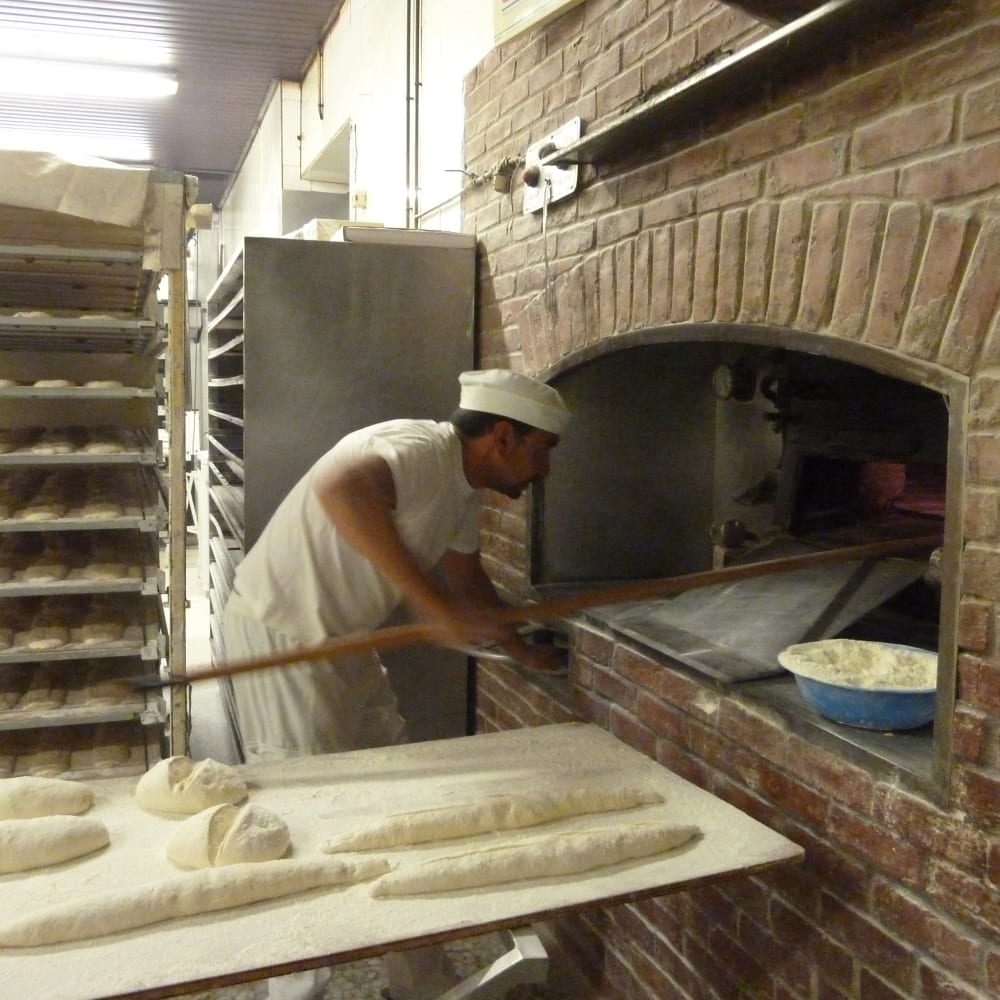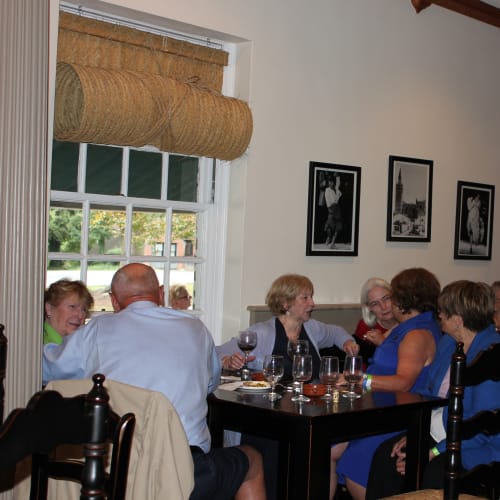Ancient Traditions Come Alive
Don Harris | February 2014




I feel very strongly that history and tradition serve as important keys to the understanding of a person or a culture. A person's roots to a great extent shape who they are and what they value. For example, I was raised in Boston (one of the oldest cities in America, founded in 1630), went to the College of William and Mary in Virginia (the second oldest university in the country, founded in 1693) and currently live less than a mile from Jamestown, the site of the oldest permanent English settlement in America (1607). I did not deliberately plan my life this way, it turned out to be a natural progression.
So it is no surprise that history forms one of the most enjoyable aspects of my lifetime visits to Spain. I try to make the personal connections that focus on the roots of this ancient land, one in which the events of 17th century Virginia are at most a footnote. In particular, I find it fascinating to trace back hundreds, even thousands of years, to participate today in a little of that past.

In this regard, perhaps my favorite city is Cádiz, one of the oldest cities in Europe. Its original settlement, the casco antiguo, is still protected by a medieval wall. The locals, many of whose families have been there for centuries, say that the city was founded by Hercules. You might think this farfetched, but in Greek mythology Hercules was credited with founding Cádiz after performing his tenth labor, the slaying of Geryon, a three headed monster with three sets of legs all joined at the torso. In antiquity, the settlement had a temple dedicated to the Phoenician god Melqart, known as Hercules by the Greeks. His temple even was the site of an oracle.
On the outskirts of Cadiz I enjoy standing by the ancient salt flats of the Bay of Cádiz, while talking with Manolo. He and his wife Reglín work with their five children to produce gourmet sea salt from the Atlantic Ocean. Civilizations as old as the Phoenicians and later the Romans constructed small salt flats of about 60 acres in diameter in the Bay of Cádiz. They were designed to greatly facilitate the evaporation of seawater by taking advantage of the constant and strong Levante winds. Their business is one of the last remnants of an activity that stretches back almost three thousand years.
Over in Chipiona, a seaside town where I led retreats for American sailors, we would stand on the beach next to a lighthouse built on the same site as its Roman predecessor. The lighthouse was built to warn Roman ships of the perilous rock formation which remains close to the shore even today. At low tide we saw the outlines of submerged stone fish corrals used by fisherman for hundreds of years.
Shifting my gaze from the sea to the shore, I also value the history of products whose use stretches back to antiquity. One of those is esparto grass. It is a tough, coarse, spiky reed native to southern Spain and northern Africa. The slender tough grass has been used to make baskets, ropes and floor mats since ancient times. It is not too far a stretch of the imagination to say that a pharaoh's daughter could have discovered an esparto grass basket amongst the reeds of the Nile in biblical times, as there are records of esparto use in the everyday commerce of ancient Egypt.
But that is nothing compared to the 1881 discoveries near Granada in the Alpujarra Mountains. In the back of a cave filled with thousands of bats, a farmer uncovered the skeletons of three men clothed in esparto tunics and sandals, wearing diadems of pure gold. They lived in the Bronze Age.
Esparto is one of the products that was an essential for thousands of years and yet has almost disappeared from use today. One time my wife Ruth and I paid a call on Joaquin Torres, one of the few remaining producers of this timeless product. When I looked at the scarred hands of the esparto weaver in his shop I could see why this is a vanishing craft. Joaquin's assistant told me that they find it very difficult to teach any new people this ancient craft because the sharp tough reeds are merciless on the hands of the weavers.

I remember seeing farmers and field hands in the 1960s and 1970s riding out to the fields on their 2-cycle engine motos straddled by strong durable saddlebags made of esparto. The tough woven baskets held clay bottles of cool water to slake the thirst of the laborers during the long day. Even today I see woven esparto shades loosely covering the ventilating windows of the sherry bodegas as a way to control the amount of heat entering their vast buildings - especially from the scorching winds of the Levante. Here at home we prize the esparto shades made for the La Tienda Retail Store in Williamsburg.
Many years ago, while visiting those amazing bodegas in Jumilla that produce exquisite Monastrell wine in the most difficult of terrains, I met an impressive young man named José María who was deeply committed to renewable organic farming of his many acres of olive trees. He showed me the antique olive press which was used by his family for decades, and the office where his father and grandfather supervised their olive oil business from behind a gorgeous hand carved desk made of olive wood. As I was preparing to leave he gave me one of my most prized treasures: an esparto filter disk used in the traditional olive oil press.
You may know that until very recently the production of olive oil involved the fruit being ground on a granite millstone, with the resultant mash distributed over a series of esparto discs, perhaps a dozen at a time, that were layered horizontally on a pole. Then through a screw type mechanism the esparto sandwiches of olive mulch were pressed or squashed, originally by animals but then hydraulically, and out would come the fresh juice of the olive. That is what is meant when you read the label and it says it is ‘cold pressed.’
Nowadays, virtually all the olive oil is separated from mash by a centrifuge, which separates the oil from the water from the residue. Your first cold pressed olive oil is actually centrifuged. In many ways this is a technological advance, but it was not long ago that esparto grass was integral to the making of olive oil.
The problem with the esparto process was that perhaps 10% of the oil remained within the fibers of the esparto discs. In addition to the loss of juice, the remaining olive particles made it very difficult to clean the discs completely - an absolute necessity to avoid producing oil that would be rancid.
I have told you of Greek gods, Phoenician salt flats and Bronze Age bat caves, but I will leave you with a story about the most delicious of breakfast breads: the mollete. I am sure that most of you have never heard of these little oval rolls, even though they have been enjoyed in Andalucía for hundreds of years. But then again, it is not that long ago that some of you discovered the joys of delicious Galician bread.
Every time we return to our ‘hometown’ of El Puerto de Santa María, our family heads for the traditional municipal market where many years ago Ruth and I would take our little boys every Saturday. There we would enjoy being among the hustle and bustle of local people as they filled their shopping bags with an amazing cornucopia of truly fresh vegetables, fruits and fish. We became friends with the ‘spinach lady,’ the ‘swordfish man’ and of course Charo Salguero, the legendary churro lady, who for a peseta or two, would give us a newsprint cone brimming with sizzling hot churros.

Even though forty years may have passed by, we find it still just as satisfying to sit at one of the familiar cafés next to the market and enjoy a leisurely breakfast of orange juice, toast and coffee. It sounds like something most of you do every morning - except there is a difference: the juice is freshly squeezed from local oranges, the café con leche is prepared by the bartender using an amazing machine which periodically punctuates the atmosphere with the hiss of a steam jet frothing another pitcher of milk.
I suppose you think you can approximate this elsewhere, such as Starbucks or Dunkin’ Donuts, but it is only in Andalucía that you will be served this unique toasted bread called a mollete, which has been prepared by bakers in this land for centuries, first by the Moors and now by the Christians.
To prepare individual loaves, the baristas partially slice the molletes horizontally and pop the whole mollete in the oven for about ten minutes. When the thin crust becomes firm they open the sliced mollete and bring it to your table. Many people drizzle the soft steaming interior with a fruity extra virgin olive oil, or spread with fresh tomato puree and garlic (pan con tomate). Personally I am just as happy to have the two halves spread with melted butter or marmalade. I think it is better than any English muffin I have even dreamed of - and I am an English muffin aficionado of long standing!
The city of Antequera is universally known as the home of molletes - remember that these oval loaves probably originated during the time of the Moors, who did not finally leave the city until 1454! When Ruth and I said that we would like to visit one of the best bakeries in Antequera, the town fathers could not have provided a more cordial welcome. The city officials greeted us in the mayor’s office, we were interviewed by the press, given a private tour of the city and even presented a beautiful little trophy marking the occasion of La Tienda bringing the mollete to America. The cordial owners of Horno Antequerana escorted us into their bakery and introduced us to their staff, who were forming these small oval loaves by hand. We took a picture together with the workers - a handful of perhaps a half-dozen of the local ladies and a cheerful young man who was serving as their apprentice.
What a pleasure it is to meet the past in the present: to see sea salt crystallize in the same place as it has for centuries; to look up in my friend Juan Carlos's bodega and see esparto blinds serving the same purpose as they have for centuries; and to be able break a special bread in the café with people whose forebears have done the same for hundreds of years.
I guess you could say I am an incurable romantic. But why not? ¡Viva España!
Su amigo,
Don

